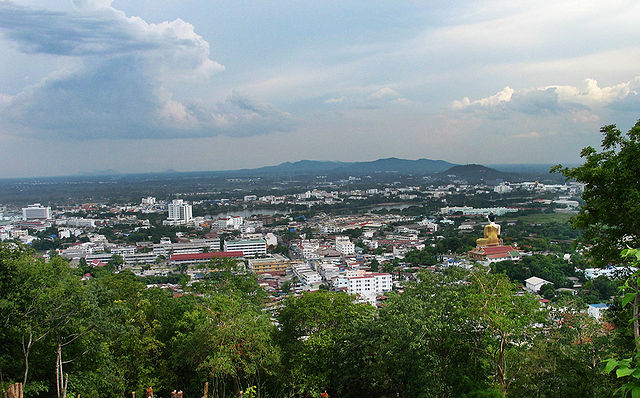(World bank, Featured Story) Cities play a crucial role in driving economic growth, acting as hubs for income generation, job creation, and improved living standards. Thailand today has a network of thriving cities beyond the Bangkok metropolitan area offering a wealth of opportunities to local residents. As urban populations surge, the need for public services, innovative infrastructure, and regular maintenance continues to grow.
These needs arise in the context of a host of global challenges, including environmental crises and natural resource scarcities, which exacerbate the financial pressures faced by local governments and cities. Like many cities in the developing world, those in Thailand often operate within constricting institutional and fiscal frameworks, confronting infrastructure backlogs and a heavy reliance on funding from higher levels of government.
To address these challenges, Thai cities and their central government agencies are actively seeking innovative financing solutions for urban infrastructure. Creating an enabling environment for subnational infrastructure investments from both public and private sources is essential to addressing these challenges.
“For Thailand, the spatial distribution of economic activities must change to promote growth, reduce inequality and poverty and to move the country toward high-income level,” said Fabrizio Zarcone, World Bank Country Manager for Thailand. “No country has grown to riches without changing the geographic distribution of its people and production.”
In an effort to bridge the gap left by solely relying on public budgets, several cities in Thailand are exploring creative ways to mobilize finance for urban infrastructure development. These major Thai cities aim to unlock their potential for sustainable growth and are collaborating with the World Bank to learn from the experiences of leading cities around the world on how better to build cities’ creditworthiness and innovative ways to develop and finance climate-resilient infrastructure and build resilience.
Khon Kaen: Thailand’s Fastest Growing City
Khon Kaen, situated at the heart of Thailand’s Northeast region, is one of the nation’s most rapidly expanding cities. This bustling city is a commercial and export nexus for the broader Indo-China region. Like many cities, Khon Kaen is grappling with restrictive institutional and fiscal frameworks as it tackles urbanization challenges and strives for sustainable development.
Through its “Smart City” development plan, it aims to establish a solid foundation for the city’s infrastructure to support new socio-economic development approaches.
“When people think of Khon Kaen, they think we are only doing the Light Rail Transit (LRT) project. But what we are actually doing is laying down the entire city’s structure so that many other projects can emerge from a good base. Khon Kaen is a SMART city, meaning that we have a 20-year strategy plan with 136 projects in place, with the LRT project being one of them,” said Suradech Taweesangsakulthai, CEO of Khon Kaen Think Tank (KKTT), a group of local businessmen spearheading visions for city development.
“However, it is very hard to get budget from the central government to develop projects that would have an impact on the city and that is why KKTT had to come in and help the city develop infrastructure on a bigger scale to push the economy in the city forward,” he said.
Suradech pointed out that the majority of the 4.6 billion baht budget allocated for developing cities goes mostly to Bangkok and its neighboring regions. He proposes that distributing these funds more evenly to foster the growth of secondary cities could contribute to the nation’s overall GDP and promote more balanced and inclusive development across the country.
His greatest hope is for other cities in Thailand to take control of their destiny and transform their cities into more sustainable places for people to live, and as great places to attract investments.
Nakhon Sawan: Gateway to the North

Playing a significant role in fostering public-private partnerships for urban infrastructure development in the city is Somsak Arunsurath, President of the Nakhon Sawan City Council. He has been instrumental in driving change and enabling growth in the region.
Somsak shared his insights, stating, “Urban development in the city only started in 2019, and the focus was previously only on basic infrastructure. However, when the Ministry of the Interior gave local administrators the authority to make town plans, they immediately changed the city’s zonings and reset the height of buildings, including the size of the city area. This action resulted in the Central Group investing more than five to six billion baht within a year, and Synphaet Hospital investing more than two billion baht, creating potential for the city to develop and not being restricted by the old city plan.”
He emphasized that good urban planning is essential not only for generating income but also for maintaining a sustainable environment within the city. Somsak encourages more urban centers to take the initiative in shaping their city maps and designs, taking ownership of their development trajectory.
Rayong: Center of the Eastern Economic Corridor
Rayong, a province nestled along Thailand’s eastern coast, is not only known for its sun-soaked shores but also for its vital role as part of the Eastern Economic Corridor, a special economic zone fostering high-tech industries that could catalyze Thailand’s growth. While the province boasts significant infrastructure projects like the U-Tapao International Airport and the Map Ta Phut Industrial Estate, Thailand’s largest petrochemical hub, one of the city’s primary objectives is to build the 193-kilometer Bangkok-Rayong high-speed rail.
Discussing potential future investments for Rayong city, Vice Mayor Phusit Chaichum shared his thoughts: “One of the things that this city can attract besides tourism is the automobile industry. Therefore, to present Rayong on an international level in the future, we should focus on the electric vehicle industry to be developed in the Eastern Economic Corridor. We will then be able to invite and attract interested global investors and stakeholders in the electric vehicle industry to invest in Rayong.”
Phusit also expressed concerns about budget limitations, elaborating that “Infrastructure development is a critical factor for a secondary city to achieve economic growth and to expand opportunities to more people. We believe that not everything should be centralized.”
The experiences and empirical evidence from OECD countries underscores the importance of empowering cities and local governments for a country’s competitiveness and economic development. It leads to the expansion of opportunities that are essential for growth, poverty reduction, and shared prosperity.
The cities highlighted above demonstrate the transformative potential of local administrations that take lead in tackling local challenges to pave the way for a sustainable and resilient urban future. These cities show that change is within reach, and through the power of collaboration between government and private sectors, positive transformations can unfold at both the local and national levels.



